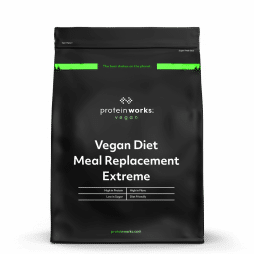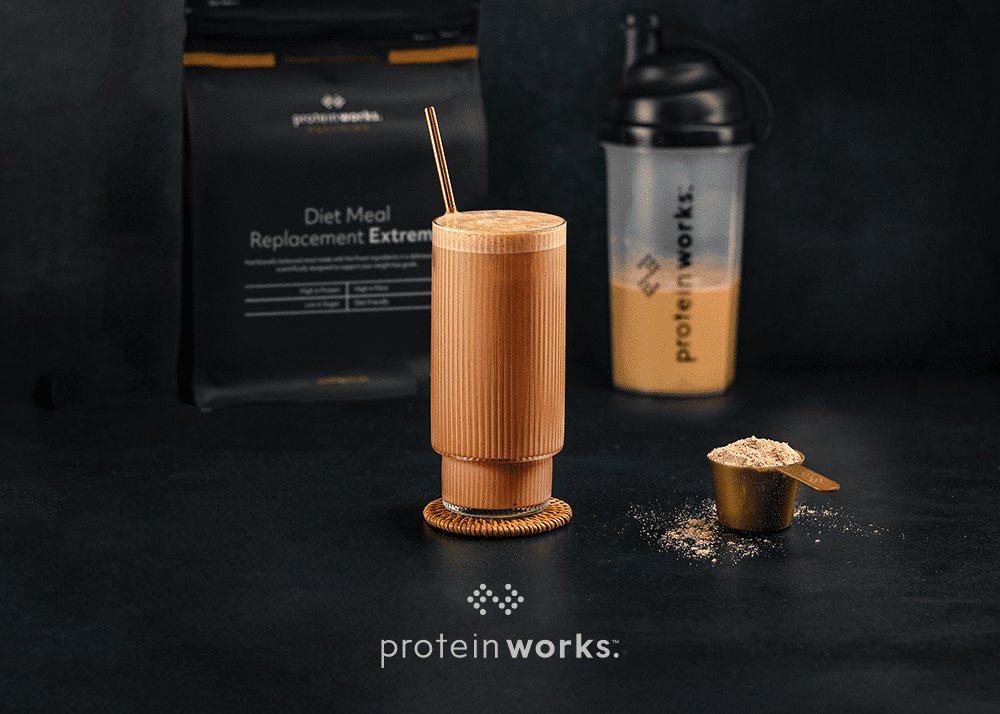
Weight Loss vs Fat Loss For Men
When men talk about wanting to lose weight, what they usually mean is losing fat and specifically, belly fat. However, those two goals are not always the same, and if you go after the wrong one, you might end up losing more than just fat as your strength, energy and lean muscle mass take a hit.
So, is there a difference between weight loss and fat loss? And do men need to approach things differently when they are trying to shift body composition?
Weight Loss vs Fat Loss – What’s the difference?
Weight loss refers to a reduction in total body mass from fat but also from muscle, water, glycogen, and even bone mass. Fat loss, on the other hand, is more specific and it refers to reducing the percentage of your body that’s made up of fat.
For men, especially as we get older, the focus should really be on fat loss while preserving lean muscle because this will help to keep your metabolism healthy, support hormone balance, and helps to maintain performance in sport and life.
Do men store fat differently to women?
Biologically, men and women do store fat differently. Men are more prone to accumulating visceral fat which is the type that sits deep around the organs, particularly in the abdomen. It’s often described as the ‘apple’ body shape and is more hormonally active than subcutaneous fat (the type that sits just under the skin). Visceral fat releases more inflammatory compounds and has a greater impact on metabolism, increasing the risk of insulin resistance, type 2 diabetes, and heart disease 1.
This means men who are overweight might not always show it in the same way as women do, but the health risks can be just as serious if not more.
How does fat loss benefit men specifically?
Reducing fat mass especially visceral fat can help in several ways:
- Improved testosterone levels: Higher body fat, especially around the waist, is associated with lower testosterone so losing fat can help restore healthy levels 2.
- Better insulin sensitivity: Less visceral fat means better blood sugar regulation 3.
- Lower risk of cardiovascular disease: A reduction in waist circumference is directly linked to better heart health4.
- Easier movement and better joint health: Especially if you are doing sports like running or where excess body fat is just extra weight to carry 5.
Do men need to approach fat loss differently?
Yes and no. The basic rules of fat loss are the same for everyone in that you need to be in a calorie deficit, but how you achieve and manage that deficit can and should be adjusted based on your goals, body composition, age, and activity level.
These are some male-specific considerations
Muscle preservation is key
Men generally have more muscle mass to begin with, and you want to keep it that way. Losing weight too quickly, or under-eating protein, can cause muscle loss, especially after the age of 40 when muscle mass naturally declines.
What to do:
- Aim for 1.4–2.0g of protein per kg of body weight daily6.
- Include resistance training at least 2–3 times per week.
- Don’t go too low on calories as mild deficits (around 500 kcal per day) are more sustainable and preserve lean mass better.
Watch the scales but don’t obsess
If you are training regularly and eating a high-protein diet, you might gain muscle while losing fat which means the scales may not move much, or at all. That doesn’t mean you are not making progress.
What to do:
- Take measurements (waist, chest, hips) and progress photos.
- Use body composition tracking if available (like DEXA or InBody).
- Take account of how your clothes fit and how you feel in them.
Hormonal factors matter more than you think
Testosterone plays a big role in how men store and burn fat. Low levels can increase fat gain (especially around the middle) and make it harder to build or maintain muscle. Stress, poor sleep, alcohol, and ultra-processed food all impact on hormone health.
What to do:
- Prioritise 7–9 hours of sleep a night. If this needs work, check out our 6 tips for better sleep.
- Reduce your alcohol intake (especially midweek drinking).
- Eat a nutrient-rich diet including zinc (pumpkin seeds, meat, poultry, eggs, beans, lentils), magnesium (dark green vegetables, nuts, seeds), and vitamin D (fortified mushrooms, oily fish, eggs and fortified foods such as cereals and plant milks)
Avoid crash dieting
It may be tempting to try and lose weight using a through extreme dieting, but this normally means eating an unbalanced diet can also lead to rebound weight gain, muscle loss, mood dips, and disrupted appetite signals. Men are particularly prone to skipping meals or cutting calories too aggressively to ‘get back in shape quickly’.
What to do:
- Focus on meal structure: 3 balanced meals, 1–2 protein-rich snacks if needed.
- Be consistent Monday to Friday and manage your weekend intake trying not to undo a week’s progress in 48 hours.
- Choose unprocessed whole foods where possible, especially for carbs and fats.
Time your nutrition around training
If you are active, especially in strength or endurance sports, then it is beneficial to time your meals to support performance and recovery while still creating a fat-loss-friendly calorie deficit.
What to do:
- Have a protein and carb meal within 60–90 mins post-training like a chicken salad wrap, or eggs on toast.
- Don’t train fasted unless it genuinely works for you. There’s no magic fat-burning advantage, especially for men, and it can leave you low on energy later. While fasted training may slightly increase the percentage of fat used during a workout, this doesn’t lead to greater long-term fat loss or better body composition compared to training after eating7.
- Hydrate well as dehydration can mimic hunger and affects performance.
What about metabolism?
It’s a myth that men’s metabolism slows significantly with age, at least not until around 60 according to research. In fact, researchers estimate resting energy expenditure (the calories your body burns at rest to keep you alive) drops by only around 4 kcal per year even after adjusting for body composition8. What does change is activity levels, muscle mass, and sometimes diet quality, especially if you’re eating the same but moving less. This is why fat loss becomes trickier in your 40s and 50s. Not because your metabolism is broken, but because your body composition has shifted and your lifestyle may need to catch up.
Men do need to think a little differently when it comes to weight vs fat loss, mainly by shifting the goal away from the scales and toward body composition and long-term health. If done in the right way, fat loss isn’t about shrinking down but about revealing strength, improving hormone health, and feeling better overall in your skin. Keep your protein high, lift weights, manage stress, and be patient as fat loss is a slower burn than weight loss, but the results will last longer.
Nutritionist’s Disclaimer:
The information in this article has been provided by Rob Hobson, Registered Nutritionist, based on current scientific evidence and is intended solely for educational and informational purposes. The content reflects general principles within nutritional science and should not be used as a substitute for individual medical advice. Any product links and promotions have been added by Protein Works and do not constitute specific endorsements from me as a nutritionist. Readers should consult with their healthcare provider before making significant changes to their diet or lifestyle or beginning any supplementation regime.
References
- Luo, J., Wang, Y., Mao, J., Yuan, Y., Luo, P., Wang, G., & Zhou, S. (2025). Features, functions, and associated diseases of visceral and ectopic fat: a comprehensive review. Obesity (Silver Spring, Md.), 33(5), 825–838. https://doi.org/10.1002/oby.24239
- Ikehata, Y., Hachiya, T., Kobayashi, T., Ide, H., & Horie, S. (2023). Body composition and testosterone in men: a Mendelian randomization study. Frontiers in endocrinology, 14, 1277393. https://doi.org/10.3389/fendo.2023.1277393
- Huang, H., Zheng, X., Wen, X., Zhong, J., Zhou, Y., & Xu, L. (2023). Visceral fat correlates with insulin secretion and sensitivity independent of BMI and subcutaneous fat in Chinese with type 2 diabetes. Frontiers in Endocrinology, 14. https://doi.org/10.3389/fendo.2023.1144834.
- Su, Y., Sun, J., Zhou, Y., & Sun, W. (2024). The Relationship of Waist Circumference with the Morbidity of Cardiovascular Diseases and All-Cause Mortality in Metabolically Healthy Individuals: A Population-Based Cohort Study.Reviews in Cardiovascular Medicine, 25. https://doi.org/10.31083/j.rcm2506212.
- Adouni, M., Aydelik, H., Faisal, T., & Hajji, R. (2024). The effect of body weight on the knee joint biomechanics based on subject-specific finite element-musculoskeletal approach.Scientific Reports, 14. https://doi.org/10.1038/s41598-024-63745-x.
- Jäger, R., Kerksick, C., Campbell, B., Cribb, P., Wells, S., Skwiat, T., Purpura, M., Ziegenfuss, T., Ferrando, A., Arent, S., Smith‐Ryan, A., Stout, J., Arciero, P., Ormsbee, M., Taylor, L., Wilborn, C., Kalman, D., Kreider, R., Willoughby, D., Hoffman, J., Krzykowski, J., & Antonio, J. (2017). International Society of Sports Nutrition Position Stand: protein and exercise.Journal of the International Society of Sports Nutrition, 14. https://doi.org/10.1186/s12970-017-0177-8.
- Zouhal, H., Saeidi, A., Salhi, A., Li, H., Essop, M., Laher, I., Rhibi, F., Amani-Shalamzari, S., & Abderrahman, A. (2020). Exercise Training and Fasting: Current Insights. Open Access Journal of Sports Medicine, 11, 1 – 28. https://doi.org/10.2147/OAJSM.S224919.
- Palmer, A., & Jensen, M. (2022). Metabolic changes in aging humans: current evidence and therapeutic strategies.The Journal of Clinical Investigation, 132. https://doi.org/10.1172/JCI158451






